如何更改iTunes备份位置
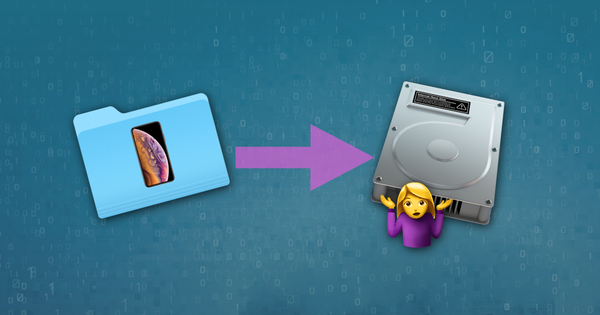
默认的iTunes备份位置设置为PC或Mac的主磁盘,而在macOS 10.15中,由Finder创建的iOS备份存储在同一位置。许多用户从许多iOS设备进行大量备份或备份,因此他们发现自己的磁盘空间不足。
可以配置计算机,使iTunes备份到辅助硬盘,或备份到外部HDD或NAS。
简而言之,这是通过将iTunes备份文件夹替换为指向所需位置的符号链接来完成的。这是一个容易逆转的更改,因此可以将默认备份位置还原到其原始目录。
请注意,如果iTunes备份位置更改为始终不可用的卷,则当新位置不可用时,iTunes备份过程将失败。
你需要什么
要更改计算机的默认iTunes备份位置,必须满足以下条件:
- 适用于PC或Mac的中等能力
- 10分钟
- 了解所需的新备份位置路径
- 运行macOS 10.7或更高版本的Mac,或运行Windows Vista或更高版本的PC
- Reincubate支持团队随时为您提供帮助,并可就如何执行此操作向客户提供建议。
自动更改iTunes iOS备份文件夹
免费版iPhone Backup Extractor将自动显示您计算机的默认iTunes备份位置 - 并允许您更改它。
- 下载并安装iPhone备份提取器 。
- 从主菜单中选择
Preferences - 选择
Backups来自Preferences窗口![“首选项”窗格显示备份位置 The "Preferences" pane showing backup locations]()
“首选项”窗格显示备份位置 - 单击“
Change按钮开始更改iTunes默认备份文件夹的过程。
在Windows上手动更改iTunes iOS备份文件夹
- Open the default Backup location in Explorer using the Windows Run command. Press
⊞ Win+Rand the Run window should appear. For Windows 7, 8 and Windows 10 iTunes Apple version, enter%APPDATA%\Apple Computer\MobileSyncand press⏎ Enter. For iTunes Microsoft Store version, enter\Users\[USERNAME]\Apple\MobileSync\Backup, where[USERNAME]is your Windows user name. - 打开的资源管理器窗口将显示名为“备份”的文件夹。这包含计算机上已存在的所有iTunes备份。要更改备份文件夹的位置,必须重命名,移动或删除此文件夹。例如,可以将其重命名为“Backup(Old)”。
- 重命名,移动或删除“备份”文件夹后,可以创建符号链接到所需的备份位置。为此,必须打开命令窗口。通过按住
⇧ Shift并在最近打开的MobileSyncExplorer窗口中单击⇧ Shift右键,用户将看到一个菜单,其中包含“在此处打开命令窗口”或“在此处打开PowerShell窗口”选项。点击它。 - 使用以下命令
mklink /d Backup "[desired-new-backup-path]"。输入此命令后,按⏎ Enter,更改将完成。 - 重新启动Windows后,iTunes会将其备份存储在新位置。
手动更改macOS上的iTunes iOS备份文件夹
- 启动macOS终端应用程序。这可以使用Finder在
Applications / Utilities / Terminal下找到。或者,可以通过按⌘ Cmd+使用Spotlight启动它并在按⏎ Enter前键入“Terminal”。 - 通过输入
cd ~/Library/Application\ Support/MobileSync然后按⏎ Enter,指示终端更改为默认的iTunes备份位置。 - 通过输入
open .显示Finder中的当前备份文件夹open .然后按⏎ Enter。 - 打开的Finder窗口将显示名为“Backup”的文件夹。这包含计算机上已存在的所有iTunes备份。要更改备份文件夹的位置,必须重命名,移动或删除此文件夹。例如,可以将其重命名为“Backup(Old)”。
- 重命名,移动或删除“备份”文件夹后,可以创建符号链接到所需的备份位置。使用以下命令
ln -s [desired-new-backup-path] ~/Library/Application\ Support/MobileSync/Backup。输入此命令后,按⏎ Enter,更改将完成。 - 重新启动Mac后,iTunes会将其备份存储在新位置。
如何将iTunes备份文件夹还原到其原始位置
如果你已经采取了上述步骤,并且想要改变,那么这个过程很简单:
- 浏览到iTunes备份文件夹 。
- 删除将出现在那里的
Backup符号链接。 - 将原始
Backup文件夹重新拖回,必要时重命名以匹配其原始名称。
其他挑战?
我们已经让一些用户联系到已经将他们的iTunes备份文件夹移动到另一个位置 - 只需拖动它 - 现在缺少必要的符号链接以便iTunes能够看到备份。
这很容易解决,有两种选择:
将文件夹拖回到最初找到的位置。如果您忘记了,它应该被称为
Backup,它存在于~/Library/Application Support/MobileSync。创建指向它的符号链接 - 与上面描述的方式相同。如果你在这个阶段,你应该打开一个终端并执行以下操作:
cd [location of the folder which now has "Backup" in it] ln -s Backup ~/Library/Application\ Support/MobileSync
它应该就这么简单。
有可能无法做到这种情况吗?
这种技术适用于每台Mac,但它不适用于2000年之前构建的Windows PC。在Windows 2000发布之前,Windows 默认使用FAT格式的文件系统 ,而且这些文件系统无法创建符号链接。从那时起,任何Windows PC构建几乎肯定会使用NTFS格式的磁盘,这些支持符号链接就好了。如果您正在运行FAT并尝试创建链接,则可能会看到此错误: Local volumes are required to complete the operation.
幸运的是,Microsoft提供了有关如何将磁盘从FAT升级到NTFS的一些说明。它有点技术性,但它是可能的。
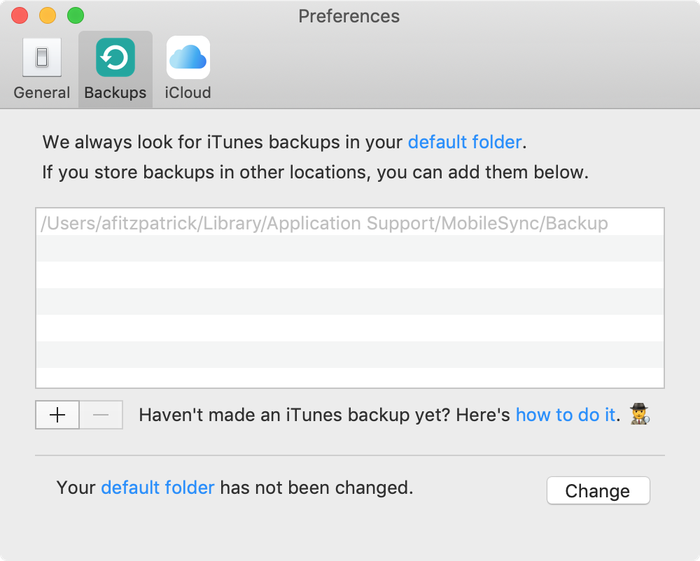

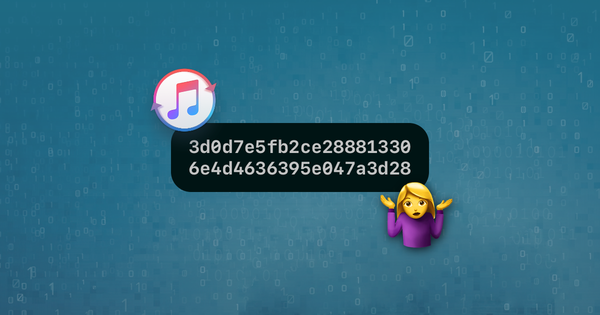

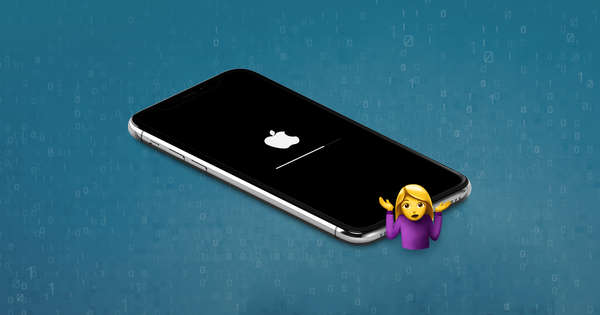
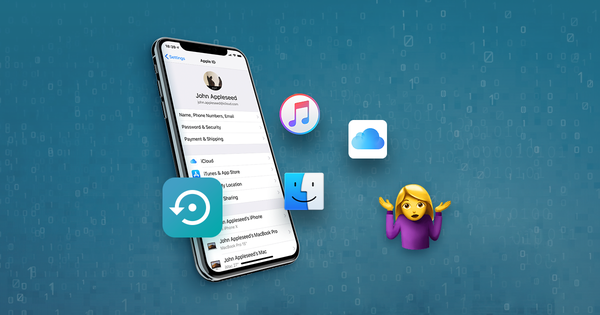
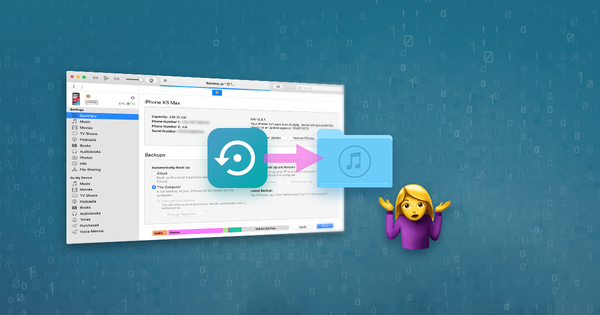
由 Gael
Bonjour,
J'essaie tant bien que mal de déplacer ce Backup et de créer un lien symbolique. Cependant, la seule réponse que j'ai est: illegal option -- /
Je vous laisse le chemin que j'utilise et si une âme charitable veut bien m'aiguiller. Merci :)
ln -s/Volumes/VERBATIM\ HD/SAUVEGARDE\ IPHONE/ ~/Library/Application\ Support/MobileSync/Backup ln: illegal option -- / usage: ln [-Ffhinsv] source_file [target_file] ln [-Ffhinsv] source_file ... target_dir link source_file target_file
回复: Reincubate Support
Salut Gael, merci d'avoir écrit! Le problème ici est l'espace ("") entre votre chemin et les barres obliques.
Il doit s'agir de
ln -s /Volumes/VERBATIM\ HD/SAUVEGARDE\ IPHONE/ ~ /Library/Application\ Support/MobileSync/Backup, et non deln -s / Volumes / VERBATIM \ HD / SAUVEGARDE \ IPHONE / ~ / Library / Application \ Support / MobileSync / BackupFaites-nous savoir si vous avez besoin d'aide! 🙂
由 Alex
Backing up to remote Synology server (not local). All you need:
thanks
由 Samuel Kwok
Exactly what I needed. I don't want to store on my MacBook as it takes 200GB. This allows me to move to a Time Capsule. I don't use Time Machine but I use Time Capsule as a network drive and another copy of the whole Time Capsule to another network drive.
回复: Reincubate Support
Glad it helped!
由 Rick Galloway
I've got the symbolic link created, but my iPhone back up still goes to the original C: drive location. When I look on my k: drive, I do not see the symbolic link file subdirectory even though it said it was created.
回复: Reincubate Support
Hi Rick: the symlink should be in your C: drive, in
MobileSync, and calledBackups. It'd be that that points to the K: drive in your case. If you get stuck, why not use the functionality in iPhone Backup Extractor? It can do it for you, and it's in the free edition.由 Colleen Gordon
How do I figure out the my desired new backup location path? I want to use an external drive.
回复: Reincubate Support
Hi Colleen, thanks for commenting. If you use the functionality in iPhone Backup Extractor to change location, you can make the change simply by browsing to the folder you want. That might be easier! 🙂
由 Mike L.
A fix to the insufficient permissions error--
Since I got the permissions insufficient in both cmd and powershell. First you search
cmdand then right click the command prompt app and run as admin. Navigate to the directory using the cd command ex.(cd c:\users\youruser\apple\mobilesync). once in the directory you can use the (mklink /d backup [new directory]) command listed in the article. That worked for me.As a side note, when using the cd command to navigate remember that you will likely have to put any folders with a space in the name inside quotation marks ex.(
cd c:\users\"this user"\apple\mobilesync). hopefully this helps some avoid the hassle of having to figure out this process if you get that persistent insufficient permissions response.由 Aaron
Hello Aidan!
So I'm trying to change the backup path on Windows, and of course get the "insufficient privilege" error in the regular Powershell. So I ran it as administrator by typing it in the search bar and it said it created the symbolic link to the location, so I restarted my PC & tried updating iOs but the backup still went through to the original location (my hard drive, while I wanna change it to an external one simply 'cause I don't have enough space left on the former, lol).
So I guess my question is: how do I run Powershell in the MobileSync window as admin/how do I get the one I open through the search bar as admin to go to the MobileSync folder location so I can properly create the symbolic link & switch it up? :/
P.S. I did skip step one if I'm being honest, but only did so 'cause I already found the location manually, then proceeded to follow the instructions w/ renaming the folder, etc. Might this be the reason why it's not working? If so, shall I re-rename it to its original "Backup" name and try it again with the 1st step? I doubt it since I can't get the Powershell to go to the MobileSync location while I run it as admin to begin with/can't change it without running it as admin in the aforementioned window...Then again what do I know, lol.
P.P.S. Does the admin-run Powershell not need the MobileSync path to be put in and can successfully render the switcheroo by typing the featured command right after the "system32" path? If so, what seems to be the problem?
I was hoping to update my iOS tonight, and am getting more & more frustrated as we speak. Sorry for the post being so jumbled, hope all's clear. Thanks for the help!
回复: Reincubate Support
Hi Aaron, thanks for the comment.
Yes, if you skipped step 1 your Powershell will be looking in the wrong folder, so it won't have created the symbolic link in the right place.
If you've already got a Powershell or command window open, you can make it change folder with this command:
cd %APPDATA%\Apple Computer\MobileSync(If it's looking at the wrong drive, you'll have to change drive by typing
C:.)We've reached out to you directly to help, but if anyone else runs into the same problem, we'd recommend undoing the steps you took, starting over, and making sure to include the first step. 🙂
由 Mohamed
I tried it, the following error popped up .. Plz advise
回复: Reincubate Support
Hi Mohamed, it looks like you're using PowerShell to run the command. If that's the case, you must prefix you command with
cmd /c, so it's likecmd /c mklink, etc.由 Sean
I'm trying to do this on Mac OS 10.14.6 (Mohave), but when I try Step 5, I receive a "Operation Not Permitted" message. Any ideas...?
回复: Reincubate Support
Hi Sean, thanks for commenting. On macOS Mojave and newer, you'll need to grant "Full Disk Access" to your Terminal in order to make the change. There's a how-to on how to do this for iPhone Backup Extractor here, I hope that helps!
由 Max
Thank you for the article. Here are a few notes to help somebody.
CD(include space). Example:CD C:\Users\Username (change this)\AppData\Roaming\Apple Computer\MobileSyncmklink /d Backup "L:\Users\XYZ"由 Joe
I'm still having trouble with permissions, when I open up powershell in admin I get a command line PS
C:\Windows\System32>I don't seem to be able to open it in admin mode from the file path of the itunes back up.回复: Reincubate Support
Hey Joe, you can change directory using the
cdcommand. Try this:cd %APPDATA%\Apple Computer\MobileSync由 Jess
Thanks for this assistance! I too got stuck on the "you do not have sufficient privilege to perform this operation." I then followed your advice in the comments above and ran Powershell as an administrator, but the Powershell window that opens from the MobileSync folder doesn't seem to recognize that and keeps giving me the same message. What do I do from here? Thanks!
回复: Reincubate Support
Hey Jess, thanks for writing. It's the same privilege error you're getting? If you drop us a note I'm sure we can guide you through it.
由 Андрей
У меня выдает ошибку в PowerShell mklink : Имя "mklink" не распознано как имя командлета, функции, файла сценария или выполняемой программы. Проверьте правильность написания имени, а также наличие и правильность пути, после чего повторите попытку. строка:1 знак:1 + mklink /d Backup "[desired-new-backup-path]" + ~~~~~~ + CategoryInfo : ObjectNotFound: (mklink:String) [], CommandNotFoundException + FullyQualifiedErrorId : CommandNotFoundException
回复: Reincubate Support
Привет Андрей, попробуй
cmd /c mklinkи так далее 🙂由 Hogan
Hi Aidan, Thanks for your amazing instructions!
I have run them on my Mac but got an error saying "Library/Application Support/MobileSync/Backup: No such file or directory". I guess this happened because I have renamed the old "Backup" file. Actually, it also confuses me a lot when u say "Once the 'Backup' folder has been renamed.../Backup", as the original "Backup" file doesn't exist anymore(right?)
Looking forward to your further clarification. Thanks :)
回复: Reincubate Support
Hi Hogan, thanks for your kind words. That second "Backup" reference is assuming you didn't change the folder's name, but simply moved it elsewhere. If you did rename it, you'd want to change it in that command. I hope this is clear. If it's not, do drop us a note. (Or use iPhone Backup Extractor to move it for you, as the free version can automate this process.)
由 Luna
hi i get this message when i try and finalize the path: "You do not have sufficient privilege to perform this operation." It's my computer and i understand it has to do with admin rights but how do i run windows powershell as admin?
回复: Reincubate Support
Hey Luna! No problem: on Windows, you'd click on the "Start" button, then type "powershell". You'll see the menu search eventually shows you the PowerShell icon. If you right-click on that, you'll see there's a "Run as Administrator" option. Good luck -- I've asked our support team to drop you an email directly in case you need further help. 🙂
由 Cedric koh
If I were to delete the backup symlink in the itunes MobileSync folder,how will that affect the backup folder i used for the symlink in my other drive? Will the files inside the backup folder in my other drive be unusable?
回复: Reincubate Support
Hi, thanks for stopping by. Removing the symlink is safe: it will effectively just remove the pointer to the backup folder on your other drive. The files will still be usable, but iTunes (or Finder) won't know where to look for them.
You could then move the files back to where they were originally -- or create another symlink.
由 PBHRider
Great work. How do you come up with this stuff? Did the manual method on Windows 10 using the command prompt with admin privilges and am now backing up my iphones etc to my NAS drive. Saving about 4Gb on my SSD on my laptop. Thank you.
回复: Reincubate Support
Really pleased it worked out for you. 👍 Don't be a stranger if you need help in future!
由 Michael Milbourn
You do not have sufficient privilege to perform this operation. It's my computer, who is not letting me change things on it?
回复: Reincubate Support
Michael -- if you're on a Windows machine, trying running these commands in a Windows Command that has been launched with "Run as Administrator".
由 Lucas
Works like a charm! I followed the instructions for manually changing the iTunes iOS backup folder on Windows (through PowerShell). It is exactly what I was looking for to free up space on my C: drive. Thank you so much Aidan!
回复: Reincubate Support
Our pleasure, we're glad it helped!
由 Brad
Thank you for this
由 kalveer kaur lehal
Hi thanks for this. I get an error saying:
Local volumes are required to complete the operation.
How can I fix this please? Thanks
回复: Reincubate Support
Hi Kalveer, this message suggests your filesystem is FAT-based. I've updated the article to include a mention of why it's not possible to create links on FAT. I've also included a link to instructions on upgrading to NTFS. Good luck!
由 Greg
Awesome instructions, thank you! I think there is a typo on step 5 for Mac. The command line is written as
-s [desired-new-backup-path] ~/Library/Application\ Support/MobileSync/Backupbut the folder "Support/MobileSync/Backup" doesn't exist since we moved/deleted it. I had to change it to "Support/MobileSync" and then the folder I linked to was called "Backup".回复: Reincubate Support
Howdy Greg! Having "Backup" in the path should be correct, as it'll ensure the link that gets created is called "Backup". Makes sense?
We've got something up our sleeves to make this a little easier in future. Keep an eye on the release notes. 😏
由 salma
hi ! i did all the steps but i kinda don't get where is the new backup location now ?
回复: Reincubate Support
Hi Salma -- the new location will be the folder you created the link to!
由 Clint
Firstly Aidan - thank you very much for this.
My main drive is a (relatively) small SSD and I would like to be able to save my iTunes backups to the NAS setup instead. You have provided a fantastic workaround!
One thing I wasn't sure about was at step 3 (Windows) - when you right-click (to choose "Open PowerShell window here"), is that in the Explorer window of the now renamed Backup folder? Eg, in the now-named "BackupOld" folder window?
回复: Reincubate Support
Hi Clint, thanks for your kind words. I've updated the article to make it crystal clear: the window you right-click in is the one you opened at
%APPDATA%\Apple Computer\MobileSync.由 Hugues Larouche
And how do you reverse it on Windows PC ? Thx
回复: Reincubate Support
Hugues, thanks for your comment. I've updated the article to explain that!
由 Fred Brunson
Aidan, I don't understand your instructions in How to change the iTunes backup location. What do you mean by prefix your command in PowerShell with cmd /c, like mklink /J Backup "[desired-new-backup-path]".
回复: Reincubate Support
Hey Fred, thanks for asking. Just like this:
I'll tweak the explanatory text to make it clearer.